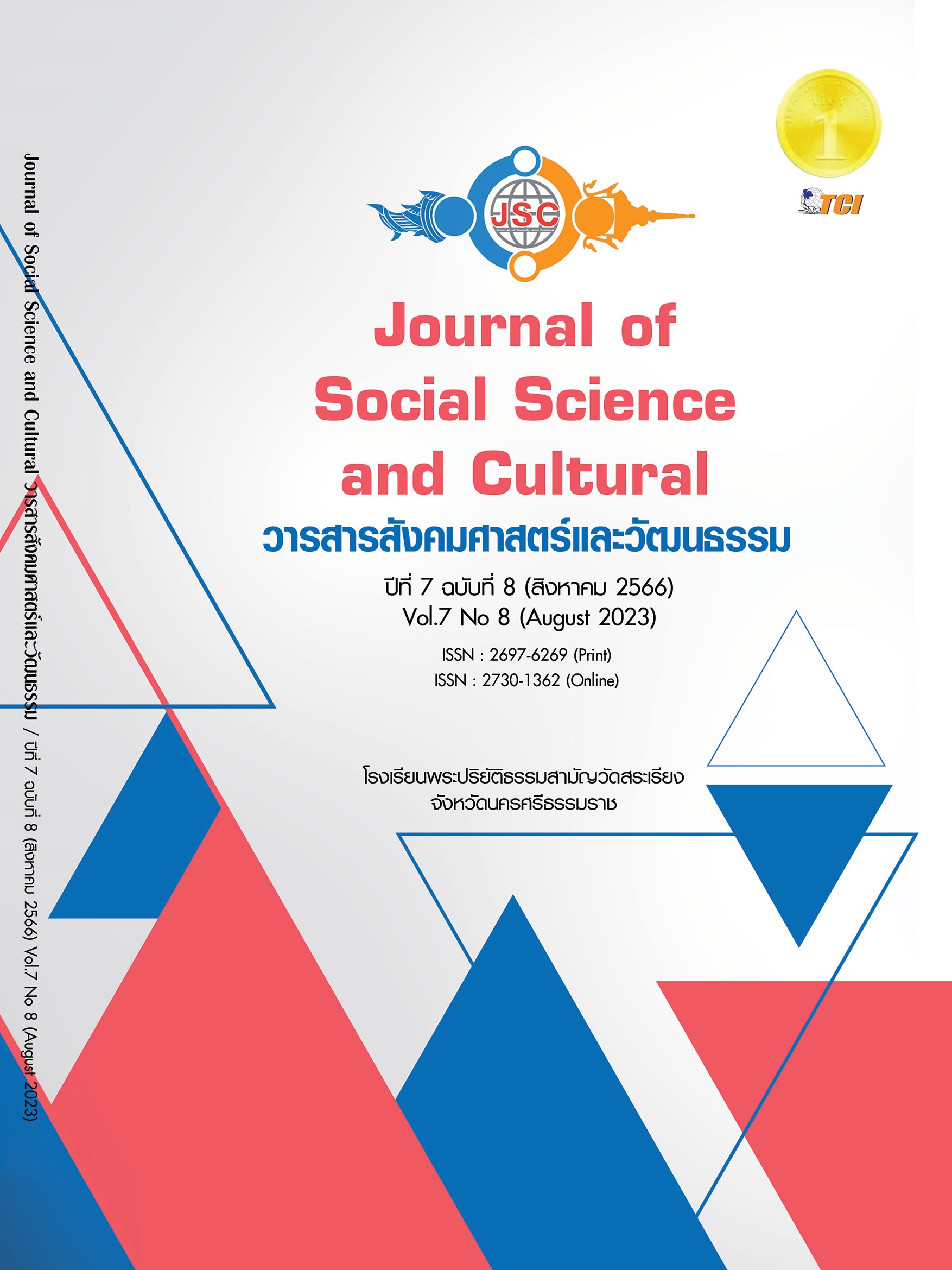HUMAN RESOURCE DEVELOPMENT AFFECTING THE PERFORMANCE OF TEACHERS IN PRIVATE COLLEGES IN NONTHABURI PROVINCE
Main Article Content
Abstract
The purposes of this research were 1) to study the demographic profiles consisting of sex, age, teaching experience, educational level, and income per month, which affected the performance of lecturers in private colleges in Human Resource Development Affecting The Performance of Teachers in Private Colleges in Nonthaburi Province; 2) to study the relationship between the factors of the human resource development activities and the performance result of lecturers in private colleges in Nonthaburi Province. The researcher applied the quantitative research method in conducting this study, and collected the primary data with the questionnaire from 212 samples who are lecturers in private colleges in Nonthaburi Province. The statistics used in this study are Percentage, Mean, Standard Deviation, t-test, One Way Analysis of Variance (F-test), Pearson Correlation, and Stepwise Multiple Regression. The research results was found that lecturers with different sex, teaching experience, educational level, and income per month have the same performance, while lecturers with different age have different performance with the statistical significance at .05 level. The research results was found that the factors of human resource development activities affect the performance of lecturers in private colleges in Nonthaburi Province with the statistical significance at .01 level. The factors of human resource development activities can describe the variance of the performance of lecturers in private colleges at 70.50% (Adjust R2 = .705), and the rest 29.50% is the results of other factors which are not taken into consideration in this study. The equation forecasting the performance of lecturers in private colleges in Nonthaburi Province is = .299 in the occupation development activity (X4).
Article Details
References
จันทร์เพ็ญ มีนคร. (2557). การพัฒนาทางด้านวิชาการของอาจารย์มหาวิทยาลัยราชภัฏกลุ่มรัตนโกสินทร์. วารสารวิชาการ มหาวิทยาลัยปทุมธานี, 6(3), 40-49.
ณัฏฐ์วัฒน์ ภควันฉัตร และคณะ. (2565). การพัฒนาทรัพยากรมนุษย์ที่ส่งผลต่อประสิทธิภาพการปฏิบัติงานในองค์กร ของพนักงานภาคเอกชน จังหวัดชลบุรี. วารสารวิจัยมหาวิทยาลัยเวสเทิร์น มนุษยศาสตร์และสังคมศาสตร์ , 8(2), 29-38.
มูลนิธิโครงการสารานุกรมไทยสำหรับเยาวชน. (2556). สารานุกรมไทยสำหรับเยาวชนฯ เล่มที่ 38 เรื่องที่ 3 การอุดมศึกษา ประเภทของสถาบันอุดมศึกษาในปัจจุบัน. เรียกใช้เมื่อ 9 ธันวาคม 2565 จาก https://www.saranukromthai.or.th/sub/book/book.php?book=38&chap=3&page=t38-3-
infodetail06.html
ศิริวดี วิวิธคุณากร. (2564). ศึกษาการพัฒนาสมรรถนะทางวิชาการของอาจารย์มหาวิทยาลัยราชภัฏ. ใน ดุษฎีนิพนธ์รัฐประศาสนศาสตรดุษฎีบัณฑิต สาขารัฐประศาสนศาสตร์. มหาวิทยาลัยราชภัฎมหาสารคาม.
สำนักงานปลัดกระทรวงการอุดมศึกษา วิทยาศาสตร์ วิจัยและนวัตกรรม. (2557). ประวัติหน่วยงานด้านอุดมศึกษา. เรียกใช้เมื่อ 9 ธันวาคม 2565 จาก https://www.ops.go.th/th/content_page/item/ 1707-history-mua
สำนักงานเลขาธิการสภาการศึกษา กระทรวงการศึกษา. (2559). สภาวะการศึกษาไทย ปี 2557/2558 จะปฎิรูปการศึกษาไทยให้ทันโลกในศตวรรษที่ 21 ได้อย่างไร. กรุงเทพมหานคร: บริษัท พิมพ์ดีการพิมพ์ จํากัด.
สุจิตรา ธนานันท์. (2550). การพัฒนาทรัพยากรมนุษย์. (พิมพ์ครั้งที่ 2). กรุงเทพมหานคร: สถาบันบัณฑิตพัฒนบริหารศาสตร์.
อภิภา ปรัชญพฤทธิ์. (2554). หลังสมัยนิยมและการอุดมศึกษา. กรุงเทพมหานคร: สำนักพิมพ์อินทภาษ.
Barney, J. B. (1986). Organizational Culture: Can it be a Source of Sustained Competitive Advantage? Academy of Management Review, 11(3), 656-665.
Barney, J. B. (1996). The Resource-Based Theory of the Firm. Organization Science, 7(5), 469-469.
Pace, R. W. et al. (1991). Human Resource Development: The field. Englewood Cliffs. New Jersey: Prentice Hall.
Ulrich, D. (1997). Human Resource Champions: The Next Agenda for Adding Value and Delivering Results. Boston: Harvard Business School Press.
Ulrich, D. (2005). The HR value proposition. Boston: Harvard Business School Press.
Yamane, T. (1973). Statistics: an introductory analysis. New York: Harper & Row.


